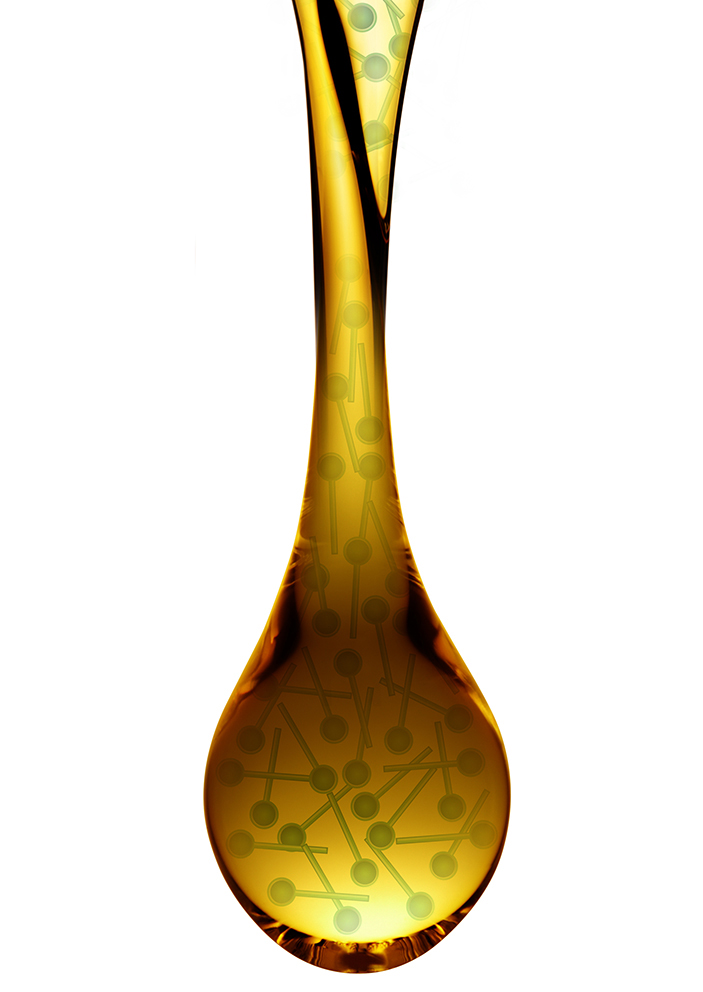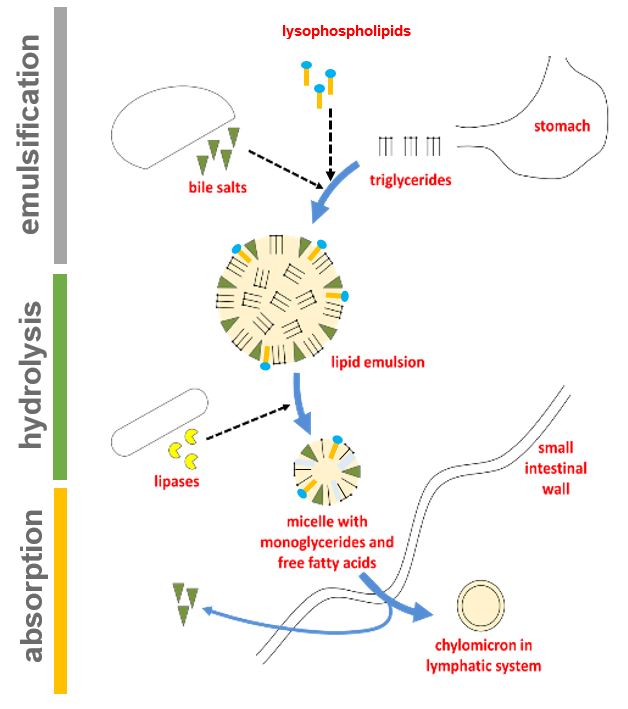Improve Fat-Soluble Vitamin Absorption with Nutritional Emulsifiers
The bioavailability of fat-soluble vitamins can be increased with the inclusion of a nutritional emulsifier – or biosurfactant – in the final feed. Alongside bile salts, biosurfactants work to form smaller, more stable oil-in-water emulsion droplets that are more effectively hydrolyzed and absorbed than with bile alone.5
Use of biosurfactants – polysorbates, lecithin, lysolecithins, etc. – can especially be beneficial for young animals which have limited ability to digest and absorb dietary fats and fat-soluble nutrients, like vitamins, carotenoids and pigments.5 For example, lysolecithins have been shown to improve vitamin E uptake in eggs8 as well as enhance collagen deposition and increase jejunum villus length in broilers.9
Summary
Maximizing vitamin absorption is key to ensure your animals get the vitamins they need for optimal health and performance. To optimize conditions for vitamin uptake, using protected vitamins and managing gut health are key. Additionally, improving emulsification can lead to more efficient fat-soluble vitamin uptake. Use of a lysolecithin-based nutritional emulsifier like LYSOFORTE® can help producers to optimize digestion and absorption of fats and fat-soluble nutrients thereby:
- Enhancing the uptake of fat-soluble ingredients like vitamins and carotenoids
- Maximizing utilization of energy from oils and fats
- Improving animal performance to offer better feed cost control
For more information on how LYSOFORTE® can help your animals maximize vitamin absorption, visit Kemin Animal Nutrition and Health at kemin.com/lysoforte-us.
References
1Marks, J. 1979. A guide to the vitamins: their role in health and disease. Published by MTP, Medical and Technical Publishing Co., Ltd., England.
2Mishra, B. and Jha, R. (2019). Oxidative stress in the poultry gut: potential challenges and interventions. Front. Vet. Sci., 6:60.
3Lauridsen, C. 2019. From oxidative stress to inflammation: redox balance and immune system. Poultry Science, 98:4240-4246.
4Grenier, B. and Applegate, T.J. (2013). Modulation of intestinal functions following mycotoxin ingestion: Meta-analysis of published experiments in animals. Toxin, 5:396-430.
5Ravindran, V. et al. (2016). Fats in poultry nutrition: digestive physiology and factors influencing their utilization. Animal Feed Science and Technology, 213:1-21.
6Reboul, E. (2013). Absorption of vitamin A and carotenoids by the enterocyte: focus on transport proteins. Nutrients, 5:3563-3581.
7Reboul, E. (2019). Vitamin E intestinal absorption: regulation of membrane transport across the enterocyte. IUBMB Life, 71(4):416-423.
8The effect of LYSOFORTE® on Vitamin E deposition in broiler breeder eggs in a commercial facility, TD-10-00399.
9Brautigan, D.L. et al. 2017. Lysolecithin as feed additive enhances collagen expression and villus length in the jejunum of broiler chickens. Poultry Science, 96:2889-2898.


